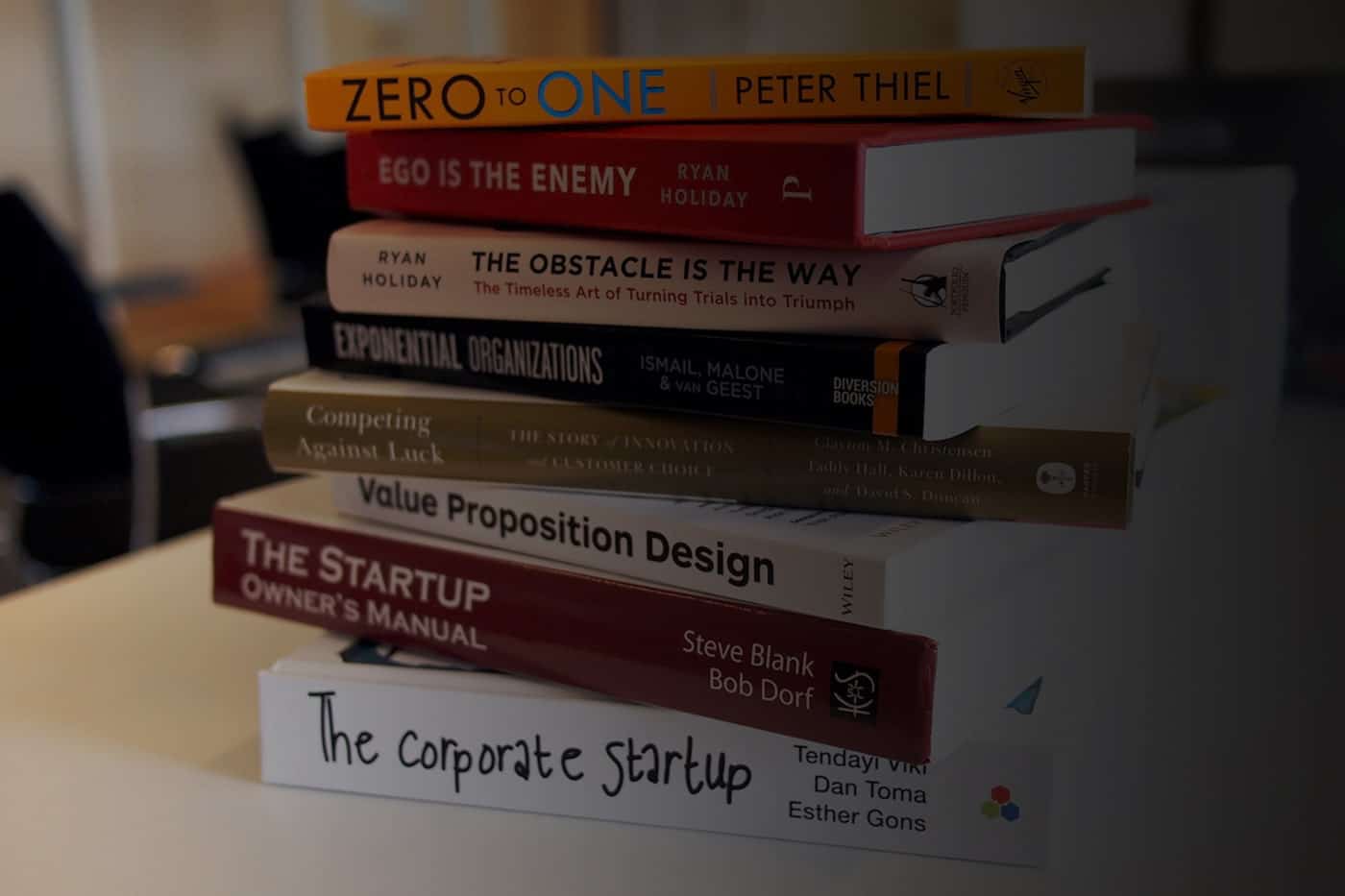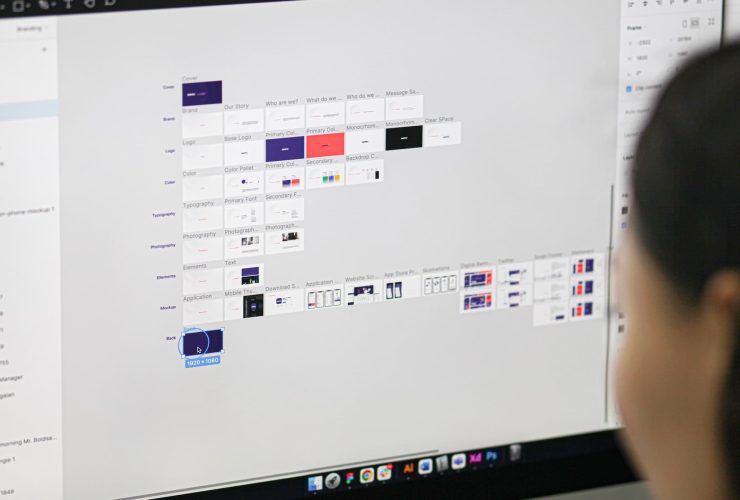There are more startups in the market than any other time in history and this number will only continue to increase. As startup founders continue to seek out new growth hacking methods, to gain incremental increases in revenue and market share, the level of saturation and noise within each industry also continues to increase. The downside of this growth hacking approach to startup growth is that credibility and trust often wanes for startups that haven’t invested in branding once they have identified and validated their core value proposition. The goal of a startup is ultimately to disrupt the market and build an extraordinarily great company that adds outstanding value to the market. So it goes without saying, that a minimum viable product must not be mistaken as the long-term vehicle to achieve this goal. Which is why as soon as market validation has taken place, branding is the essential key to creating distinction, credibility and trust through a world-class first impression. Only then can it be effectively and sustainably amplified through marketing strategies and paid advertising to create market growth that becomes seamless instead of incremental, scrappy or strained.
“As soon as market validation has taken place, branding is the essential key for startups to create distinction, credibility and trust with their market through a world-class first impression.”
Receiliart
As a startup, you are bringing a new and exciting idea or business model to the market. Whether you have funding or you are still bootstrapped, your primary goal is to continuously increase your customer base while simultaneously retaining as many customers as possible through:
- The quality of your service and product
- The results or benefits you are providing for your customers
Throughout this process, you also want to be able to attract dream talent. There’s typically a lot of excitement that comes with this process as startups gain traction through product/market fit and begin capturing new market share. The attention and focus is quite heavily directed towards growth at any cost. The only problem with this is that the majority of most people don’t know who the startups are or that they even exist. So, as with any new entrant into the market, there’s often a lot of skepticism and a lack of trust/credibility towards startups that are trying to grow their market share, even when they’ve found product/market fit. As a result, it’s as important to recognize the growth that is left of the table due to a lack of branding strategy, as it is to recognize the general growth that a startup is experiencing.

To Brand Or Not To Brand, It’s Not Really A Question…
In the startup world there are really two camps when it comes to branding for a startup – those that do and those that don’t. Having recently attended the Tech In Asia Conference, it was easy to spot which startups were building considerable momentum and which ones weren’t – we just looked at the branding. The startups that were struggling to attract any real attention from the market or VCs were also those who hadn’t invested in their branding. Additionally, all the startups that were back by VCs had invested in branding their startup. It’s quite evident that the way to approach branding your startup is seeing it as a primary driver for your growth and market acquisition – a non-negotiable. With popular ideas such as the concept of an MVP and agile growth, a lot of startups have tended to drift away from establishing their core message and brand identity from the very beginning or even after funding. However, even with a strong value proposition, most wider market spaces will not easily accept a startup that looks like it might break on them, or the startup will often have a difficult time retaining their marketshare. The pattern that we are beginning to notice is that investors are starting to push their startups to invest in branding much earlier on for 2 reasons:
- They’re noticing that startups that gain market share through early adopters struggle to reach a wider market without investing in their branding.
- Competitors are springing up much more often than they used to, so leaving branding till the last minute isn’t an option because building a brand takes time.
What Are The 3 Stages To Successfully Growing Your Startup Into A Top-Of-Mind Brand?
When it comes to bringing a new product or service to the market, there are really just three stages that build a successful startup. These three stages are be crucial to achieving the level of growth that a startup wants to achieve, when attracting new market share through their innovative or disruptive take on the market and it’s current offering. These 3 stages are validation, positioning and amplification…
- Most startups will focus on validating their product in the market first and rightly so. Without a great product/market fit and validated product or service, no amount of branding or marketing, regardless of how good it is, will suffice.
- The next stage is positioning, which focuses on what it is you stand for, as well as positioning every aspect of your brand around that unique perspective or core strength. However, after finding validation in the market, most startups with skip positioning and move straight to amplification. Do so at your own risk.
- Amplification involves things like paid advertising or other marketing tactics and strategies in an attempt to grow/increase marketshare. The only problem with this is that both saturated markets and the dynamics that exist when a startup is looking to gain credibility and trust within a market war against startups that have failed to position themselves effectively through their branding strategy.
Makes sense so far? An easy way to understand this process is by seeing your startup as an engine. You want to be firing on all cyclinders (validation/positioning/amplification). This growth framework of Validation, Positioning and Amplification has been outlined more extensively below.


Validation – Successfully Branding Your Startup Through Your Value Proposition
Every startup is built on the basic economics of whether or not people want your market offer e.g. product or service. Startup founders ask questions like, “Is the prospective demand large enough to outweigh the potential risk of moving forward and can we lead people into a place of desire surrounding our product or service?” Understand your client’s ambitions, pains, needs, wants and desires, and in doing so, take steps towards answering the simple question of whether or not your market offer has been validated. As mentioned, historically, most startups jump straight from validation to amplification. Primarily because it’s easy to do so and it begins the cycle of cash flow between prospects who support the validation of their value proposition and the attempts to increase the number of active customers. However, it often becomes the #1 roadblock to capturing a wider market, past the early adopters. It makes sense then, that the foundation to branding your startup begins with your value proposition and its validation. Who you seek to serve, why you seek to serve them and how you seek to serve them must be validated in order to successfully create impactful branding for your startup. The next step is positioning your brand as a startup up before you move to amplification to ensure that your efforts are not strained by a lack of appeal and distinction.
“The foundation to branding your startup begins with your value proposition and its validation.”
Receiliart
Remember:
Strategically positioning your startup through your branding strategy and digital experience is crucial to establishing your core message and delivering it in a way that both attracts your dream customers to you like a magnet and keeps them sticking around for longer than they would anywhere else. Your short-term and long-term goal should be to establish a compelling brand story and superior branding that your market can connect with. Neglect this process and you’re almost certainly adding more noise in the market by positioning your startup as a commodity without any clear value proposition or style of communication. Remember Nike. They sell a commodity – shoes. Yet they’re next to impossible to compete with. This is the power of positioning and branding.
Positioning – Identifying Who You Are, What You Stand For and What You Stand Against
The greater the perceived value of your brand, the greater your ability to both attract and retain customers by creating distinction and differentiation around your product or service. Brand positioning is about making it next to impossible for your market to even consider going elsewhere. It’s about articulating the core point of differentiation that your brand carries both internally (for your operations) and externally (for your target audience) so that you can keep on hitting your revenue and market acquisition goals year after year. Validation and amplification are typically the areas where businesses will focus the majority of their time. It’s only when crunch time hits that they find themselves in a saturated market with a weak or intangible point of differentiation and discover that the biggest leak in their business is the way that they have positioned their brand. Brand positioning is the one thing that you can’t build overnight, as it’s the one thing that’s built on the repetition and impression of your brand as a market leader in order to attract your dream customers and retain them through brand experience.

Amplification – Reaching The Masses Effectively Requires A Compelling Message
When it comes to customer acquisition, this is typically where startups will balance the majority of their efforts along with validation. It’s vital to growth, but focusing solely on amplification is about as effective as spending all your time on the driving range but never learning how to use an iron or a putter, or better yet, position your body for optimal performance. It doesn’t matter how far you hit the ball if you can’t get the ball in the hole or wearing out your body in the process. In like manner, it doesn’t matter how much you amplify your startup to the market, at some point you will need to assess what exactly it is that you want to be amplifying, as well as creating distinction and memorability with your message. Picture yourself standing at the top of the Grand Canyon with a set of speakers and your target audience at the bottom. For them to effectively receive what it is that you’re amplifying, your message should be clear and compelling. If it’s not, you run the risk of driving them further down the canyon – away from you.
“Focusing solely on amplification is like spending all your time on the driving range but never taking the time to learn how to use an iron, a putter, or better yet, position your body for optimal performance.”
Receiliart
Remember:
Coherence in the branding of your startup means that the tone and positioning of your brand should feel like it belongs, is approachable or even unusually familiar. When it comes to branding, cookie cutter tactics will get you cookie cutter results. The customer service for your startup begins the moment someone comes into contact with your branding and they can tell if something has been fabricated or corners have been cut. If you don’t give people a reason to engage with your startup based on the interaction they have with your brand, they won’t. They’ll go elsewhere.

Brand Positioning As A Core Strength When Strategically Branding Your Startup
It should be increasingly clear why branding is important for your startup. If you want to create longevity and marketable distinction, focus on truly understanding your USP and the superior value that you offer and then work with experts to establish a leveraged branding strategy that visually articulates a superior and world-class impression. This way, your startup can be perceived and built on firm foundations as a market leader. Positioning your brand to be where you want it to be and not where it currently is, is key. Your target audience has a preferred way in which they like to be spoken to. Every startup on the face of the planet is communicating something. It’s seen as either credible or not credible, market-leading or trying to stay afloat in a saturated market. The branding for your startup is either costing you countless conversations that you’ll never have or attracting your dream customers and transforming them into loyal ambassadors.
“The branding for your startup is either costing you countless conversations that you’ll never have or attracting your dream customers, transforming them into loyal ambassadors.”
Receiliart
Early Adopters Will Only Get Your Startup So Far
So, the conundrum remains to be the unique paradigm that primarily exists in the startup world. Startups want more trust and credibility with their market but are so used to scaling a business from the mindset of a minimum viable product and agile growth tactics that they miss the foundational pillar for their growth that branding should be. While these tactics are good for the validation stage, can prove to be self-destructive once a product or service has been validated. While early adopters maybe willing to risk investing in a product or service at an early stage of the business growth the majority of the rest of the market tends to focus on the experience or first impression they have with a startup. If the experience and perceived value of your startup seem second grade or patched together, the wider market will almost always choose to go another business that seems less risky for them to purchase from, regardless of how incredible or value-driven a product or service seems to be. Branding your startup is not just about aesthetics, it’s about establishing purpose, passion and prominence in all that you do so that you can achieve the growth and impact that you envision.





